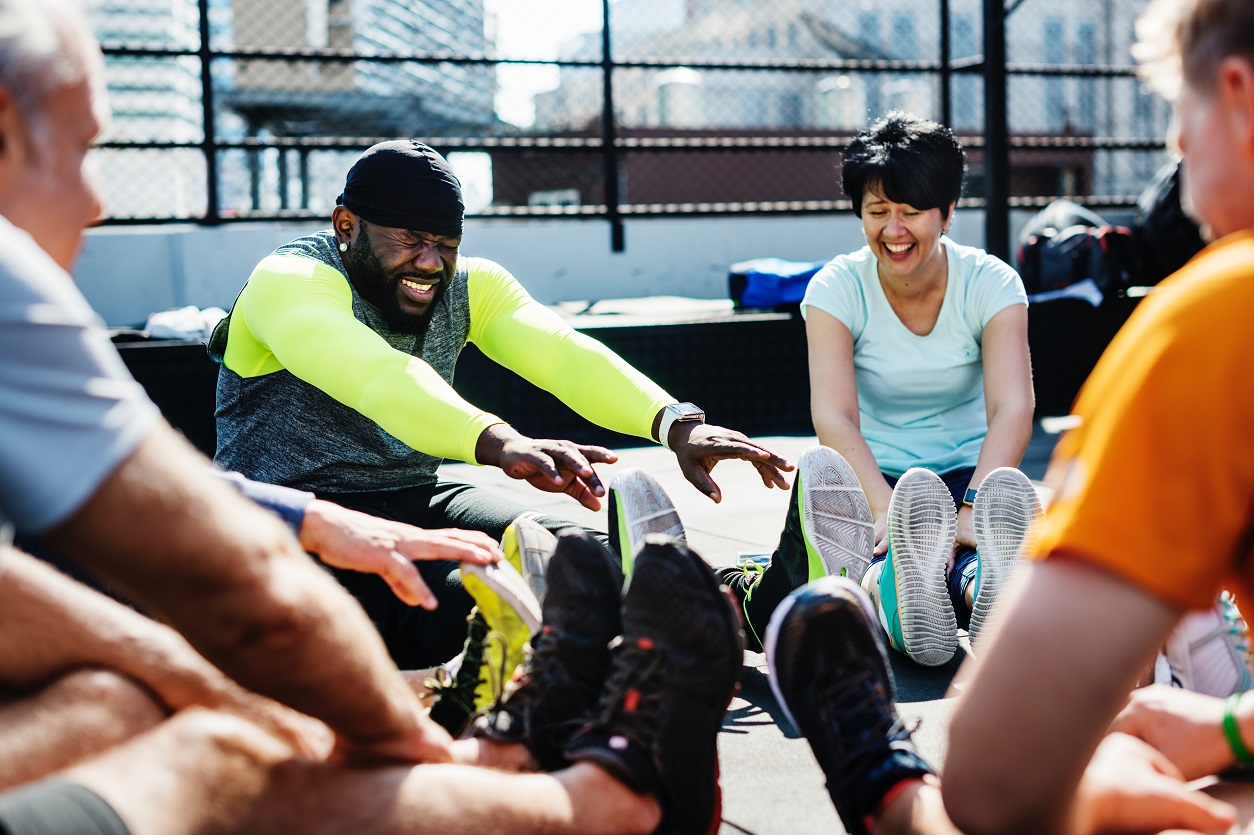Stand Up for Your Health: Breaking Sedentary Habits

Written By: Yiqing “Skylar” Yu – Doctoral Student at Colorado State University
Most of us sit way too much. Whether at the desk, on the couch, or in the car, sitting has quietly become the default position of our daily life. And while a cozy chair might feel good in the moment, sedentary habits can sneakily take a toll on the body and mind.
But here’s the good news: You don’t need to overhaul your whole lifestyle or trade your desk for a yoga mat. Even small changes in how we move throughout the day can make a big difference.
Why Is Sitting So Bad for Us?
Sitting isn’t “bad” on its own—but sitting for long, uninterrupted periods of time? That’s where trouble starts.
Physical Signs that You’re Sitting Too Much
Too much sedentary time has been linked to:
- Tight hips and sore backs
- Poor blood circulation (especially in the legs)
- Brain fog and mental fatigue
- Higher risks of heart disease, type 2 diabetes, and certain cancers
- Mood dips and lower motivation
Something many people don’t realize is that these risks are independent of how much you exercise. That means even if you hit the gym regularly (go you!), hours of sitting still can still negatively affect your health.
Think of it this way: brushing your teeth twice a day is great—but it won’t protect you if you’re snacking on candy nonstop in between. Likewise, a 45-minute workout won’t undo the effects of sitting 7+ hours straight.
The healthiest routine combines regular workouts and movement throughout the day. That could be a quick stretch, a short walk, or just standing up to refill your water bottle. These small bursts of activity keep your body and brain happy.
Tips for Standing up to Sedentary Habits
Exercise Snacks
These are short, super doable bursts of movement that help improve circulation, reduce stiffness, and boost your mood. For example:
- Standing and stretching every 30–60 minutes
- Walking during phone calls
- Five squats or jumping jacks by your desk between tasks
- Shoulder rolls or toe touches while waiting for your coffee to brew
- Dancing for one song in your kitchen
These bite-sized exercises don’t take long, but they do add up. And over time, these little moments of movement can help you feel more focused, less achy, and more energized.
Keep a yoga mat or resistance bands near your workspace for quick movement breaks. A couple of stretches between meetings? Total game changer.
Try an Alternative Workstation
If you work at a desk most of the day, another way to sit less is by switching up your environment. Alternative workstations are creative setups that help you move more while still getting stuff done.
Here are a few options to explore:
- Sit-stand desks: Adjustable desks that let you alternate between sitting and standing throughout the day. Studies show they can reduce back pain and help you stay more alert.
- Yoga balls: Sitting on a yoga ball engages your core and encourages subtle body movement. It’s a gentle way to break the stillness while still sitting.
- Treadmill desks or desk bikes: You can gently walk while typing, reading, or brainstorming. Research shows these setups can improve blood sugar control and increase daily movement—without hurting productivity.
You can also try walking meetings, especially one-on-one or brainstorming sessions. Taking a stroll while you talk isn’t just healthier, it can actually boost creativity, too.
Try to Move More at Work
- Redesign your workflow: Place your printer, water bottle, or other essentials a bit farther away, so you have to stand up to get them.
- Create a movement-friendly culture: Encourage standing during group discussions, add stretch breaks to writing sessions, and don’t feel shy about standing in the back during long seminars.
- Use a reminder: Set a timer to stand up every 30 minutes. It’s a simple way to build more movement into your day.
Work Movement into Your After-Work Hours
Your off-hours matter just as much. Ending the day on the couch is tempting (no shame in that!), but even small shifts can help you feel better overall:
- Take a short walk after dinner
- Stand and stretch while watching a show
- Try active hobbies like gardening, dancing, or cleaning with music on
- Play with kids outside
- Park a little farther away from the store
- Try temptation bundling. Only allow yourself to watch your favorite show or listen to your go-to podcast while walking or stretching. (Yes, it really works!)
All of these kinds of activities still “count” and help balance your overall movement throughout the day.
Movement is Not a One-Size-Fits-All Process
Not everyone can move the same way—and that’s okay.
People with injuries, chronic pain, or mobility challenges might need different ways to reduce sitting. That could mean shifting positions, doing seated stretches, or using tools like standing desks or supportive chairs.
The goal isn’t to move the “right” way. The goal is to move your way.
More Articles

5 Easy Ways to Get More Active
You can meet your exercise goals with these easy tips for getting more active and sticking with your routine. Learn more about getting active today.

Dangers of Sitting
Sitting is an epidemic. Ever had a day when you’ve been sitting, engrossed in something and before you know it, hours have passed? Adults in the U.S. report 7 hours of daily sitting and 50% report over 3 hours of daily television viewing.

Move More and Sit Less: How to Reduce Sedentary Time
Small movement breaks throughout the day can do a lot to break up your sedentary time. Research shows that more time spent sedentary throughout the day is associated with increased risk and death from chronic disease, weight gain and obesity, worse mental health, and reduced quality of life.

